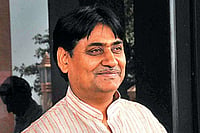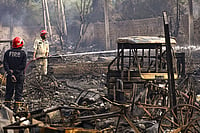Contrary to popular belief, the US presidential election is an indirect one. On November 8, US citizens, who voted for their presidential nominee, in effect voted for the electors, who form the Electoral College. They in turn will now elect the new president and the vice president of the United States.
Presidential Candidates
- Donald Trump, Republican Party
- Hillary Clinton, Democratic Party
- Gary Johnson, Libertarian Party
- Jill Stein, Green Party
(Apart from this, there are 27 other candidates in the fray)
Vice Presidential nominee
- Tim Kaine Senator of Virginia, Democratic Party
- Mike Pence Governor of Indiana, Republican Party
Election of the Electors: This will take place on the first Monday after the second Wednesday in December. The mood reflected in the popular vote is then used by the electors to cast their votes for the presidential nominee in that state. (For example, if people in state A voted for the Democratic candidate Hillary Clinton, the electors will also vote for her).

The Electors: These are people in each of the 50 states of the US who are nominated or chosen by the parties in the fray, to be their respective electors. They can be party members, or those close to the party, but not elected members of the US Congress.
The Electoral College: Is made up of 538 electors comprising the total number of the House of Representatives and the two Senate members from each of the 50 states. (For example, if state A has 18 members of the House of Representatives and two Senate members, the total number of electors from the state will be 20)
The number of the House of Representatives differs from state to state, depending on its size and population. But all the 50 states have two members of Senate each.
Number of Electors in a state: This number will vary depending on the size and population of the state. (For example, California is the biggest state and has 55 electors, while states like Alaska, Delaware, Montana, North and South Dakota, all have only three electors.
In a ‘winner-takes-all’ system, whichever party wins a state over their rival, irrespective of the margin of victory, gets all the seats in state. A winning party also gets to nominate all the electors in the state. However, in the states of Nebraska and Maine, a mixed system of proportionate and popular vote is used to form the Electoral College.
Who can be a US President: A person wanting to be a US President has to be a ‘natural born’ American, they cannot be a ‘naturalised’ citizen. They have to be 35 years or above of age and a resident of the US for a minimum of 14 years.
History in the making: Donald Trump, who never held an elected office or served in the army as a 5-star general, became President of the country.
Hillary Clinton could also have made history, if she had won, by becoming the first woman President of the US.

























